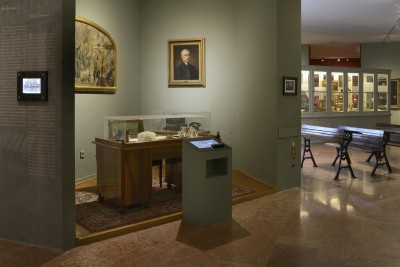- Hitre, tudásra: A piaristák és a magyar művelődés
(Budapesti Történeti Múzeum, Vármúzeum, 2017. november 15.–2018. február 28.)
|
Az iskola a piaristák tevékenységének központja és értelme, a rendtagok szervezettsége, életmódja és képzése mind ehhez igazodik. Magyarországon a piaristák iskolái főként középiskolák voltak, amelyekben a fiúk tanítása latin nyelven folyt. Elemi (anyanyelvű) osztályokat csupán kivételesen tartottak fönn. 1945 után a piarista iskolák megnyíltak a lányok és a kisebbek számára is. Az ezirányú fejlődést a kommunizmus négy évtizede (1948–1990) csupán ideiglenesen szakította meg. Jelenleg a rend szakmunkásképzőt és három óvodát is fönntart. Kezdetben a tanítás mai szemmel nézve elképesztően szűk termekben folyt. A tágasabb terek iránti igény a 19. század közepén jelent meg. A következő száz évben Magyarországon a legtöbb piarista iskola új épületet kapott, korszerű berendezéssel és szaktermekkel. Ezekben már az igazgatónak külön irodája volt, és nem a saját szobájában intézte az ügyeket. |
The school is the centre and the essence of the activities of the Piarists: the organization, the lifestyle and the training of the members of the Order are all adapted to it. In Hungary, the schools of the Piarist Order were mostly secondary schools, where the boys were taught in Latin. Elementary classes (taught in the mother tongue) were merely exceptions to the rule. After 1945 the Piarist Schools were opened also to girls and to smaller children as well. This development was interrupted during the four decades of Communism (1948–1990). At present, the Order runs a vocational school and three kindergartens too. In the beginning, teaching was realized in classrooms that seem extremely small to today’s observers. The demand for bigger spaces appeared in the middle of the 19th century. In the next one hundred years most Piarist schools in Hungary got a new building with modern equipment and special classrooms. In these, the directors had their own office and they did not have to manage all the cases from their own rooms. |
Különféle piarista iskolákban készült csoportképek, 1876–1995
